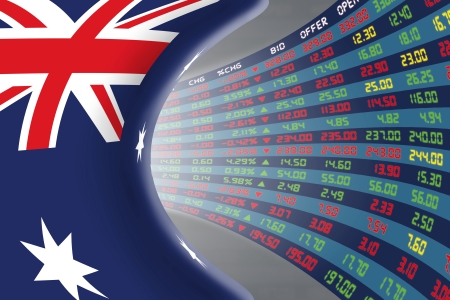Aussie stocks bounced nicely on Tuesday. The ASX 200 jumped 1.34%. Is the worst of the selling over?
Who knows?
Panic buying usually follows panic selling. It’s not a sign of a market that’s confident or has things under control. It’s a sign that the general mood is confused and nervous.
That’s why I find charts to be such an important analytical tool. You can make charts as simple or as complicated as you like. My general rule is that the more complex you make it, the less useful it is.
Put simply, the charts describe the market’s emotional state. When a stock or an index is trending higher in a contained fashion, it tells you the economy is expanding and investors are calm and confident about future growth.
But when things become volatile and the trend breaks down, it’s a sign of confusion. It’s what happens when you are at, or near, the end of the cycle.
And let’s not forget, in June this year, the secular bull market in US stocks became the longest in history. It has to end sometime.
The odds suggest the bull market is probably ending in the US. And that means the Aussie market will struggle too. But as I’ve often said, it’s not going to be another 2008 style meltdown.
What’s next for the market?
I’ll explain why in a moment. But first, let’s look at a chart of the ASX 200 to see where things are at…
|
Source: Optuma |
I’ve drawn two support lines, at roughly 5,800 points and 5,650 points.
Stocks found support around 5,650 in the latest sell-off and yesterday rallied to 5,805 points. That is, they have bounced around within that band.
Futures pricing says the ASX will FALL 44 points today (that’s despite US stocks rallying overnight) which means the upper band is now a resistance level.
More importantly, the lower band is a crucial support level. If stocks fall below here in the coming weeks, I think you’re going to see significant further falls. In fact, you could see the market give up nearly all its 2016–2018 bull market gains.
That’s just a potential scenario though. I don’t want to freak anyone out. You have to play what the market throws at you, and not react to imaginary scenarios.
Right now, those two levels in the chart above are important in determining where the market will go next. If stocks trade above resistance in the next few days, you could see a decent rally into Christmas.
But if they break below support? Well, Christmas will be pretty grim. [openx slug=inpost]
Start planning for this in 2019
Now, let’s suppose that does happen. If you’re a short-term investor and/or prone to panic, I can see how such a decline would be very unnerving. But if you genuinely have a long-term investment horizon, you should be pretty excited about it. Provided, of course, that you have enough cash available to take advantage of the situation.
This comes back to what I said earlier about the unlikeliness of there being a re-run of 2008.
There is no global credit bubble (built on a global housing bubble) this time around. So it is very unlikely that banks will ALL get into trouble from falling property prices.
In Australia, the situation is a little different as we do have falling property prices and the banks have tightened credit already. That is arguably what is causing our current problems.
But the RBA has not raised rates and is not likely to do so. In a sign of just how fragile Australia’s economic recovery has been over the past two years, the RBA has not raised rates once, even though the economy picked up strongly.
In my view, for house prices to fall significantly, interest rates need to rise.
Which brings me to the main point. Cash rates are still very low. Apart from panic and fear, there is no rational incentive for investors to park their money in cash long-term.
If share prices take another leg down from here, they will become increasingly attractive relative to cash and bonds. So while fear may depress prices in the short-term, the unattractiveness of cash and bonds means they will remain good long-term investment alternatives.
Always remember that investing is a relative game. We can choose cash, shares, bonds, or property. If EVERYONE chooses cash at the same time, as happened in 2008, asset prices collapse. That’s because back then there was not enough cash in the system to satisfy the panic demand.
As a result, other assets prices had to fall dramatically to ensure that RELATIVE to cash, prices were very attractive. This saw smart investors get out of cash early and make big returns.
But because interest rates have not increased in Australia, liquidity is still plentiful. If people want to move to cash, there is plenty of it around without having to send stocks plummeting. This means stock prices have to fall LESS to make them relatively attractive against low cash rates and bonds.
For example, the yield on Australian 10-year government bond yields is around 2.6%. That compares to the ASX 200 trading on an earnings yield of around 6.67%.
On a relative basis, stocks look attractive. Obviously, short-term earnings are at risk if the Aussie economy slows next year, as I think it will. But if the market falls to reflect that short-term drop in earnings, it will represent an outstanding opportunity to accumulate stocks for the next expansion.
So stop worrying about another 2008-style meltdown. Start planning for opportunities in 2019.
Regards,
Greg Canavan
